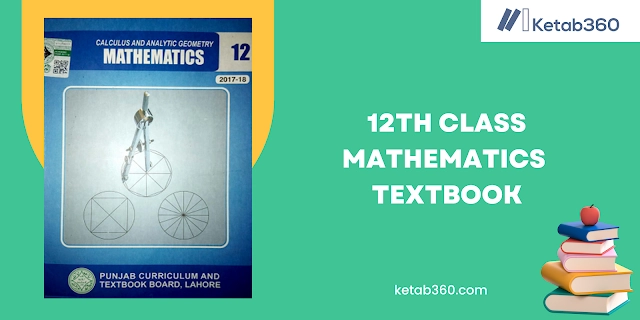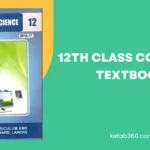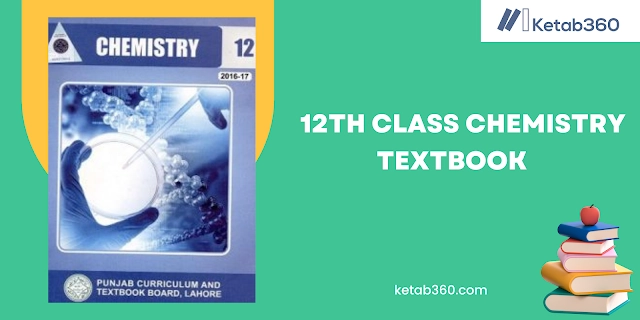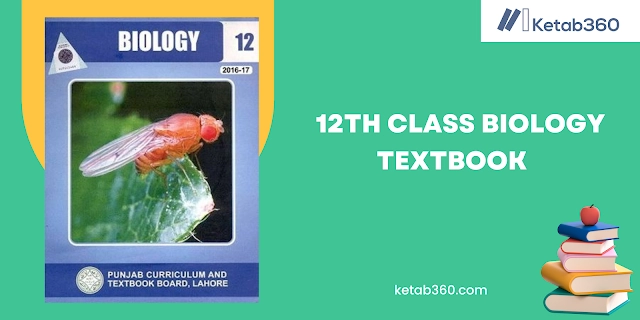12th Class Math Book By Punjab Board
Welcome to the right place if you are looking for the 2nd-year Math Book. Here, you can access all the chapters of the Math book from the Punjab Curriculum and Textbook Board on this webpage. We have included the entire book, covering chapters such as Trigonometry, Least common multiple, Antiderivative, Inverse function, and Applied mathematics, so you won’t need to visit other websites to find different parts of the book.
What does the book contain?
The twelfth Grade Science Book by Punjab Board comprises of 7 parts: Works and Cutoff points, Separation, Incorporation, Prologue To Logical Calculation, Direct Disparities and Straight Programming, Conic Areas, and Vectors. The book is crafted to reinforce knowledge and attitude related to the subject, empowering students to establish their objectives and enhance problem-solving and critical thinking abilities.
Chapter No. 1 : Functions & Limits
In this chapter, students will delve into the fundamental concepts of functions and limits. They will explore different types of functions, including polynomial, trigonometric, exponential, and logarithmic functions, and learn how to analyze their properties and behavior. The chapter covers the concept of limits as a fundamental tool in calculus, enabling students to understand the behavior of functions as the input approaches certain values. By the end of this chapter, students will have a solid foundation in functions and limits, paving the way for more advanced topics in calculus.
Chapter No. 2 : Differentiation
In this chapter, students will explore the concept of differentiation, a fundamental operation in calculus. They will learn how to find derivatives of various functions, including polynomial, trigonometric, exponential, and logarithmic functions. The chapter covers differentiation rules, such as the chain rule and product rule, to solve complex differentiation problems. Additionally, students will apply differentiation in real-life scenarios, such as finding rates of change and tangent lines to curves. By the end of this chapter, students will have a comprehensive understanding of differentiation, a vital tool for analyzing and solving problems in calculus.
Chapter No. 3 : Integration
In this chapter, students will delve into the concept of integration, the inverse operation of differentiation, in calculus. They will learn how to find indefinite and definite integrals of various functions, including polynomial, trigonometric, exponential, and logarithmic functions. The chapter covers integration techniques, such as substitution, integration by parts, and partial fractions. Additionally, students will apply integration in real-life scenarios, such as calculating areas under curves and solving problems involving accumulation. By the end of this chapter, students will have a comprehensive understanding of integration, a powerful tool for solving diverse mathematical problems.
Chapter No. 4 : Introduction To Analytic Geometry
In this chapter, students will be introduced to the fundamentals of analytic geometry, which involves the study of geometric shapes using algebraic methods. They will learn about the Cartesian coordinate system and how to represent points, lines, and curves using equations. The chapter covers concepts like distance formula, slope, and midpoint formula for analyzing geometric figures. Additionally, students will explore how to solve problems involving lines, circles, and conics using algebraic techniques. By the end of this chapter, students will have a strong foundation in analytic geometry, enabling them to approach more complex geometric problems analytically.
Chapter No. 5 : Linear Inequalities & Linear Programming
In this chapter, students will explore linear inequalities and their applications in linear programming. They will learn how to graph and solve linear inequalities and understand the concepts of feasible region and optimal solutions. The chapter covers linear programming problems involving maximizing or minimizing a linear objective function subject to constraints. Students will use graphical and algebraic methods to find the optimal solution. By the end of this chapter, students will have a comprehensive understanding of linear inequalities and linear programming, essential tools for solving real-world optimization problems.
Chapter No. 6 : Conic Sections
In this chapter, students will delve into the study of conic sections, which includes circles, parabolas, ellipses, and hyperbolas. They will learn about the standard equations, properties, and geometric representations of these curves. The chapter covers how to derive equations and identify key parameters for each type of conic section. Additionally, students will explore real-life applications of conic sections in various fields. By the end of this chapter, students will have a thorough understanding of conic sections, enabling them to solve complex problems involving these geometric shapes.
Chapter No. 7 : Vectors
In this chapter, students will be introduced to the concept of vectors in mathematics. They will learn about the representation of vectors, both in terms of magnitude and direction and in component form. The chapter covers vector addition, subtraction, scalar multiplication, and dot product operations. Students will explore the geometric interpretation of vectors and their applications in physics and other fields. By the end of this chapter, students will have a solid understanding of vectors and their properties, paving the way for more advanced topics in mathematics and science.
Tips for Effective Study of 12th Grade Math Text Book in PDF Format.
Studying Math Text Book effectively in the 12th grade can be accomplished even when using PDFs. Consider the following strategies:
To ensure a focused study session while engaging with the Math Punjab Text Book , consider the following suggestions:
- Disconnect from the internet: Disable internet connectivity while studying to minimize distractions and maintain concentration on the material.
- Keep pen and paper handy: Have a pen and paper nearby to jot down important points, key concepts, or any thoughts that arise during the study session. This aids in better retention and organization of information.
- Utilize the internet selectively: Turn on the internet only when necessary, such as when you require additional information on specific topics. Use it as a supplementary resource rather than a constant distraction.
- Capture screenshots: If you come across confusing sections or passages in the book, take screenshots to share them with your teacher or classmates for clarification and discussion. This promotes collaborative learning and helps in resolving doubts.
- Prioritize eye safety: Take care of your eyes while studying by wearing appropriate protective gear, such as glasses or utilizing screen filters. This ensures your eyes remain safe and minimizes strain during extended study sessions.
By implementing these recommendations, you can enhance your focus, note important points, utilize the internet judiciously, collaborate with others, and safeguard your eyes while studying the Math Text Book.






